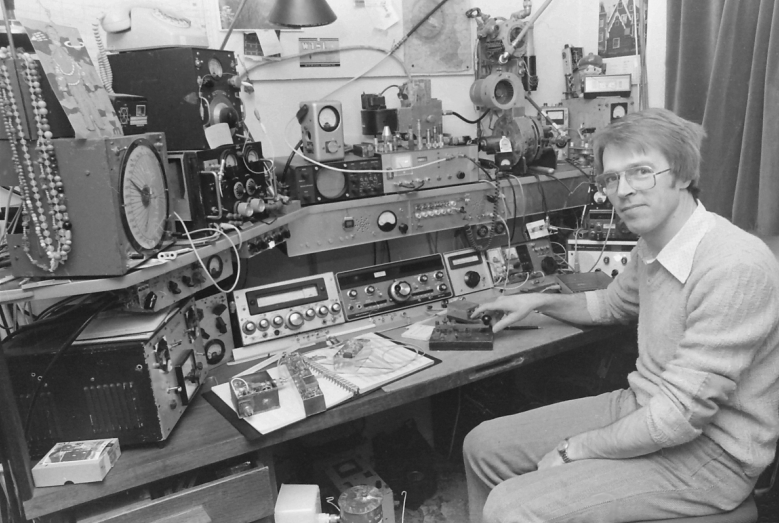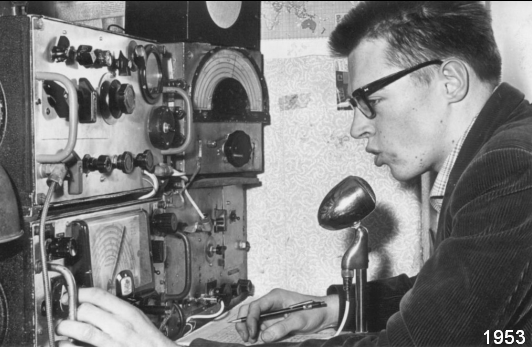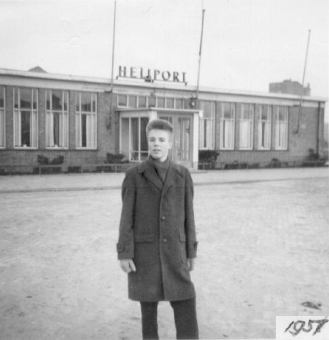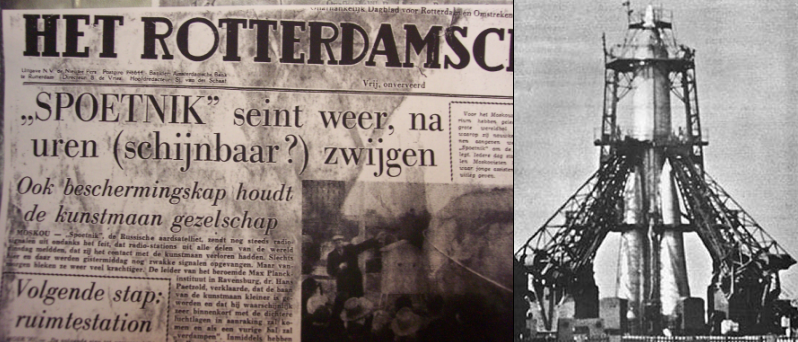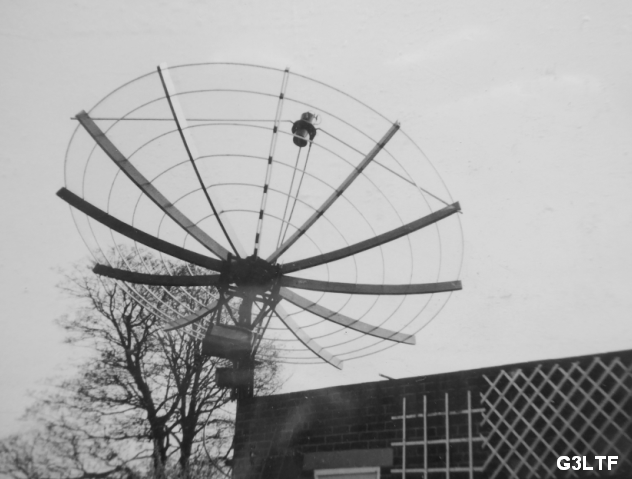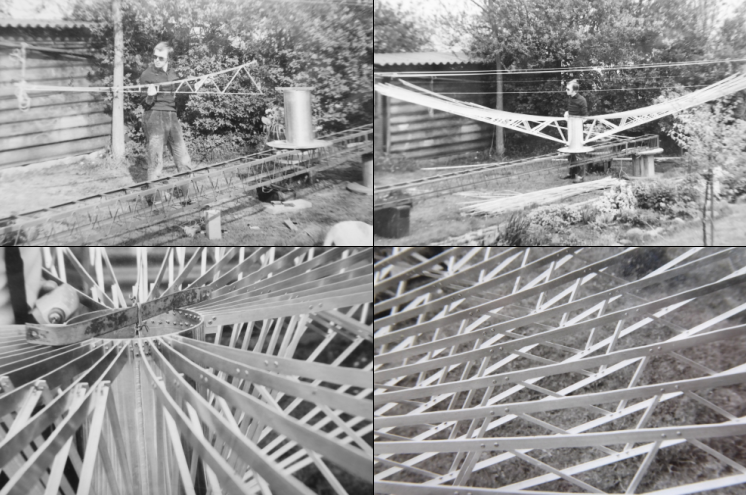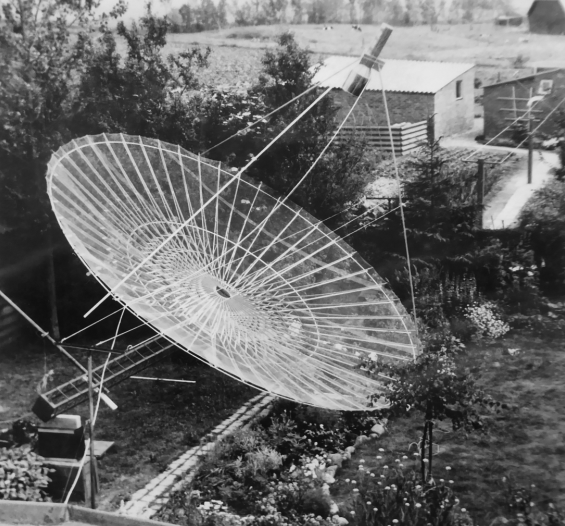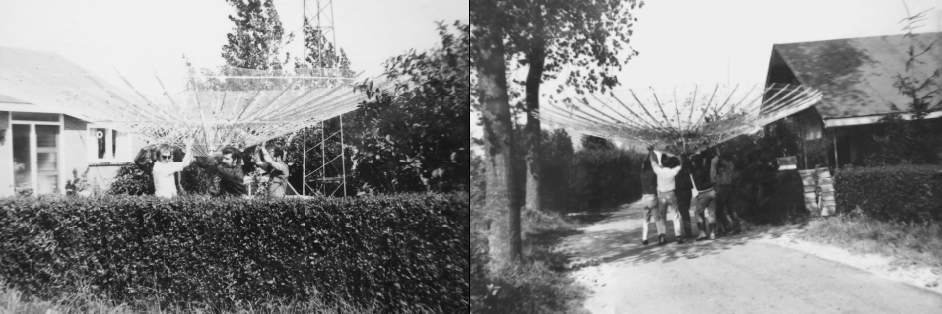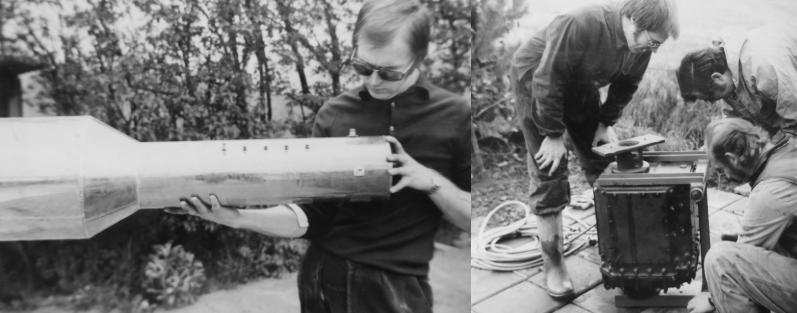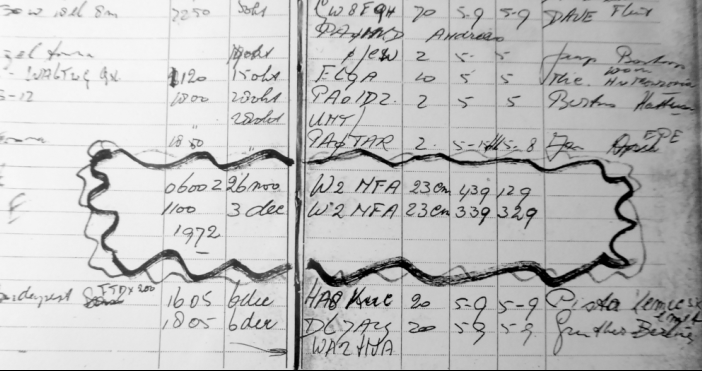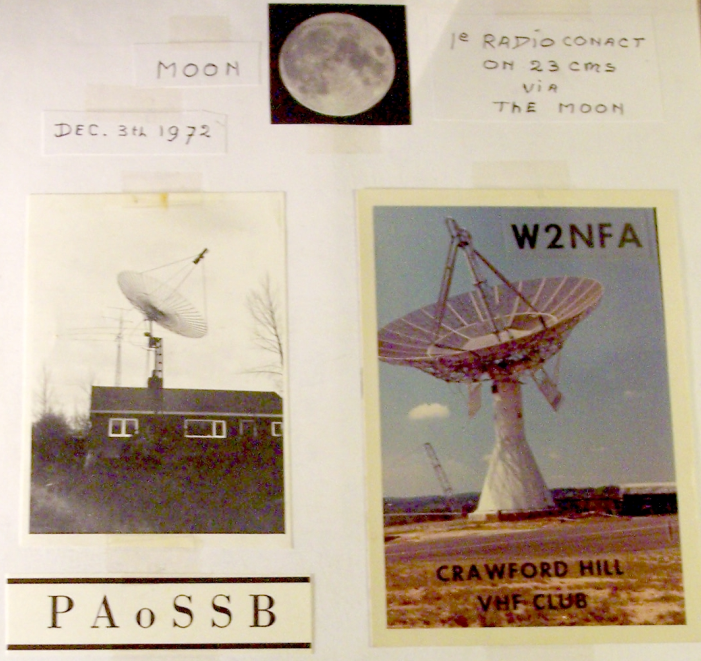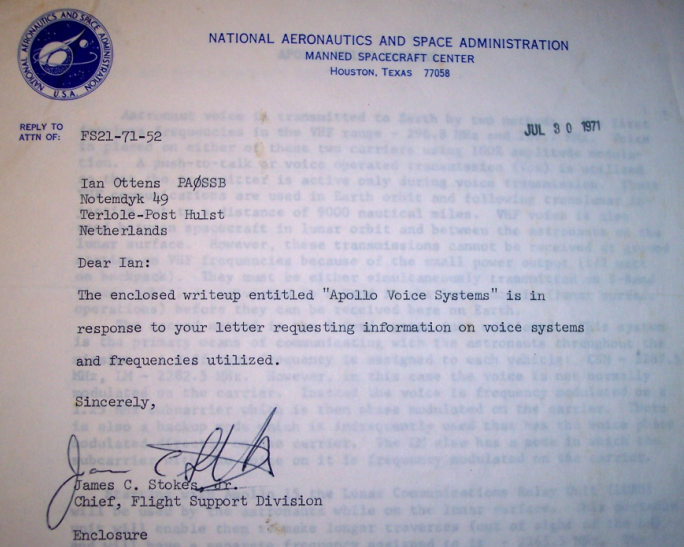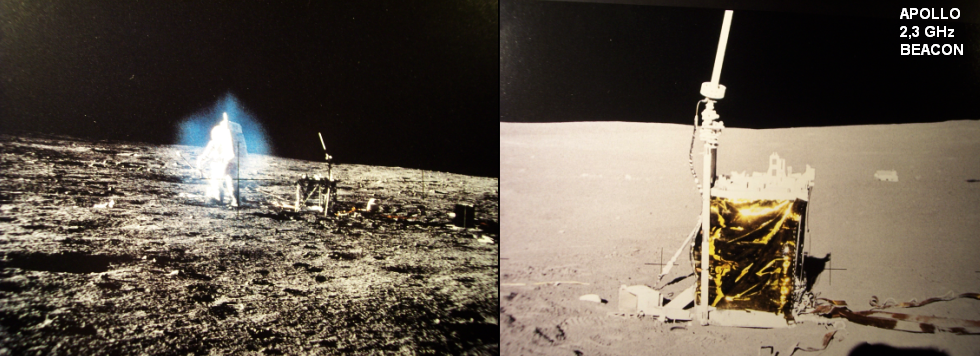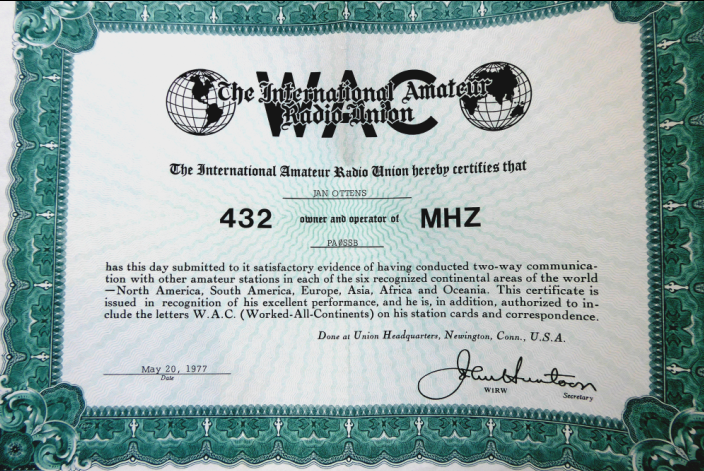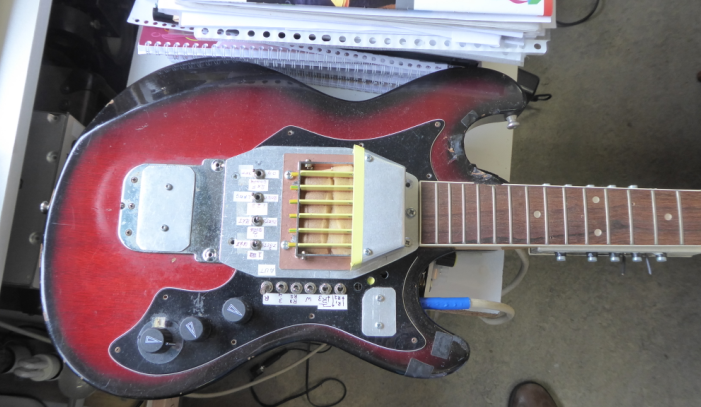|
Jan Ottens,
PA0SSB (1941-2021)
OK1TEH's comment: I was asked by friends to write the life story of PA0SSB for the K2UYH EME NL because of his interested in EME history. I was lucky to meet Jan during the 2918 EME Conference in the Netherlands. We talked for a long time not only about the early days of EME, but also about other things, and exchanged a lot of interesting photos and information. Jan was not only a good friend, a joker, a great designer and collector of historical technology, but also an excellent musician. His playing the guitar in tandem with Dirk, ON5GS was the culmination of a very successful meeting. Jan Ottens was born on May 12, 1941 in the Dutch city of Pijnacker. The invasion of the Dutch by Nazi troops severely affected his family and friends. Although the war ended when Jan was only 4 years old, he remembered long after the war how he had experienced the reconstruction of the nearby Nazi-burned city of Rotterdam, where he discovered an air-raid shelter among the remains of buildings while playing in the ruins. When he opened the cover door, three human skeletons fell on him. Jan also remembered that he was strongly influenced by the story of a 16-year-old boy from his village, who was delivering a resistance newspaper when shot in the square as a warning. When World War II ended, the decisive moment of his life came. Father Karl Ottens took his son by the house and said, "Son, here is something you need to know about." They began digging together and dug out of the ground, a radio hidden under the rocks for three years (if Nazi would found it, they would have been shot). Jan recalled that the radio was in poor condition after 3 years in the soil and when they turned it on, he saw only light from valves, but after some repairs suddenly voice and music came out of it. Since then, Jan has been an enthusiast of electronics and technology. As Jan himself said, "Without technology, this terrible war would never have ended." In later years, he not only became a great collector of historical radio equipment, but even created a perfect replica of the German encryption machine, the Enigma. In addition to radio, Jan also remembered how his father had taken him as a little boy to watch post-war attempts to launch a V2 rocket from The Hague in the Netherlands, which gave rise to his great love for everything connected with space flight.
In Feb 1953, Jan already had his ham radio license and an article about him was published in the Dutch magazine Veron as a promising radio constructer. In Oct 1957, Sputnik 1 was launched. Jan, of course, had to be there, at least on the radio, listening to its signal on his home-made receiver. In 1964, Jan married, moved to town of Terhole and began building a larger antenna system for the VHF bands.
Apollo 11 landed on the Moon in 1969, and Jan's main interest became the Moon. In addition to EME, he was also very interested in listening to the astronauts, especially when he read an article in the QST magazine, where there was a report on the reception of Apollo 15 by K4AFC in the 13 cm band. Jan started looking for information and was very inspired by the 6 m G3LTF dish with wooden ribs, which Peter has successfully operated since 1967.
Literally a treasure was the EME Technical Paper collection written by Dick, W2IMU (who then worked in Bell Laboratories) in which were published ideas for making EME dishes. Shortly afterwards, Jan began to build 3.1 m long ribs for his own 6 m dish.
Each rib was made by cutting a 2.5 cm wide strip of 1.5 x 3.00 and 3 mm thick aluminum sheet into the desired parabolic shape. An aluminum tube with a diameter of 10 cm was used in the middle, for the hub of the dish.
The dish had an AZ/EL assembly, the "heavy duty" azimuthal drive, obtained at a landfill in Belgium that originally came from a German war radar. The mesh came from a chicken farm.
For transmission during his first 23cm EME contact, he used a 2 x 2C39s PA, which gave around 70-80 W out. For reception at 23 cm, Jan first built a functional copy of the parametric amplifier by K6UQH from A QST article, but soon upgraded to a solid state LNA with 2 x BFR90s, which provided a NF of about 3 dB
After it was announced following the Apollo 13 near disaster that the Apollo 18, 19 and 20 lunar missions were canceled, Jan decided he must have his dish completed by the start of the last mission, Apollo 17 scheduled for Dec 1972. This meant, among other things, digging 2 m deep hole for the base. Jan completed the dish in June 1972 and made his first solar noise measurements on 25 June. He measured 10 dB of Sun. But it soon became clear that his 6 m dish would be blocked by a nearby house at moonrise. Jan decided to move the already finished dish to the opposite end of the garden. 6 friends helped him with the manual transfer of the heavy dish. When they were carrying the dish, a car passed by and the driver became quite perturbed by what must have appeared to him a "circus act" or even an “alien invasion”! Two days after transferring and installing the dish to the new location, there was a strong storm, and in the absence of a counterweight, the dish was nearly destroyed. Afterwards, Jan placed a 300 kg counterweight and a wind safety device over the auxiliary pulley. After these upgrades, the dish has survived on the mast to this day.
Back in the 60's and 70's many stations used polar mounts because use only one axis needed to be moved to track the Moon. Also, it was easier to calculate the Moon’s position without a computer. Jan was one of the first stations to use AZ/EL mount.
an solved the tracking problem with synchros from a surplus German radar with an accuracy of 0.1 degs. When on the 13 cm, he still had to adjust his dish’s position manually; setting in AZ every 2 to 3 minutes. The elevation was usually not so critical. Because the use of computers was very rare at that time, most stations used Almanac naval tables. However, Jan was lucky to have met W1HBA on the 14.345 MHz EME Net; who had access to a large computer and calculated the Moon’s AZ/EL coordinates for him.
an established his first EME QSO on 26 Nov, 1972 at 0600 with W2NFA (the W2IMU - Crawford Hill VHF Club in New Jersey) and then repeated this QSO on 3 Dec. It was interesting that this QSO was successfully finished shortly before a sked could be made on 20 m EME net. W2NFA used an 18 m Kennedy dish, a noise figure of 3 dB and 400 W from a UPX-4 (surplus 6 x 2C39 ring PA). They exchanged (439) reports. According to Jan they were peaking up to 18 dB above the noise. At that time, this was the first contact from the Netherlands via EME. The description of Jan's equipment and antennas was soon published in the popular EIMAC EME Anthology. Jan's design became a benchmark for other EME stations.
Shortly after his first EME QSO; on 7 Dec, Apollo 17 took off. Jan was ready. Long before the Apollo 17 flight, he wrote a letter to NASA asking for accurate data on the frequencies used, and received a very comprehensive response to his letter, sending him a number of documents and spreadsheets from NASA. By the way, he used a dual mode horn feed according to W2IMU for RX, which he created by connecting 3 oil cans, to which a diode mixer was directly connected.
On 11 Dec at 0630, Jan clearly heard a signal from the command module (CSM) orbiting the Moon at a strength of 10 dB above the noise. After 10 minutes, the signal was gone due to shadowing on the Moon's surface. The signal returned after an appropriate time. After the astronauts landed on the surface of the Moon, they placed a beacon operating in the 13 cm band on its surface. Jan then used this beacon for a long time for accurate alignment of the dish’s aiming. Jan was the only amateur to listen to Apollo signals from EU. He recorded the astronauts' conversations with the control center.
The following year, Jan added a number of QSOs via 1296 EME, with G3LTF, OZ9CR and others. In Feb 1975, he received an honorary diploma from Veron for the first contact between the Netherlands and Australia. In the same year, W6LET put the 45 m SRI radio telescope in Stanford on 432 EME. Although the W6LET signal was received by a number of EU stations, the only QSO from the EU continent was done by PA0SSB. At this time, Jan was detecting 9 dB of Sun noise and used a 1 kW PA with a 2.0 dB NF LNA on 432. Shortly afterwards, a number of other stations established QSOs with W6LET in 1976, including OK1KIR.
In the fall of 1976, the first EME dxpedition to South America, HK1TL took place, operating on 432. Thanks to this dxpedition, K2UYH QSO’d his last continent and received the first 432 MHz WAC diploma. Half a year later, on 20 May, 1977, PA0SSB completed a 70 cm WAC and became one of the first EU stations to receive this award (others in the same year were G3LTF, K3PGP, I5MSH, VE7BBG and W1SL). In the following years, Jan continued his activity on EME; in 1983 he set a new world record at 23 cm by working ZL3AAD in CW and SSB at over 18,773 km. Between years 1981 and 1986 Jan also held 13cm EME World record for his CW QSO with W6YFK, QRB 8860km. G3LTF remembers that Jan had an amazing SSB signal and together with VE7BBG (SK) had 20-30 minutes long regular SSB EME talks.
But everything is not just EME. Jan had an
amazing historical collection of several unique radios, instruments, and
as ON5GS mentioned, in addition to a faithful copy of Enigma, Jan also
created an incredibly modified electric guitar with a home synthesizer, in
which he used only sprung pieces of copper PCB to play chords without
strings. The synthesizer was built using a 10 MHz oscillator. Large photo gallery of PA0SSB can be seen at: https://ok1teh.rajce.idnes.cz/pa0ssb_eme_history/ https://ok1teh.rajce.idnes.cz/pa0ssb_museum/
Movies: https://www.youtube.com/watch?v=WeQ24JpD-pQ https://www.youtube.com/watch?v=4EOyR5gF_M8 https://www.youtube.com/watch?v=4b0Hhg-efcA https://youtu.be/8iv_gYPGT7s?t=34
for OK2KKW web and K2UYH EME Newsletter (TNX AL) wrote and edited Matej, OK1TEH in year 2021 |
